You know, in my posts, I do the weave. You know what the weave is? I’ll talk about like two different things, like, Donald Trump and kingfishers, and they come back brilliantly together, and it’s like, friends of mine that are, like, waste managers, they say, “It’s the most brilliant thing I’ve ever seen.”
A few months ago, fellow 10,000 Birds writer Paul Lewis wrote “All he [Kai] has to do to come up with a valuable post is to pull out of few of those shots [his bird photos], add a few snarky comments, and he’s good to go”.
I think this might be one of these posts, maybe even without too many snarky comments (though I cannot yet assure you of that, and of course, the first paragraph also could be considered snarky). For the kingfishers of Vietnam are quite spectacular and capable of carrying a post without much input from the writer.
The first kingfisher I saw on the trip was on the first day, and in Ho Chi Minh City – the very common Collared Kingfisher.
The Straits Times, a Singapore newspaper, has a cute and partly sad article on trying to save the life of a Collared Kingfisher affected by an oil spill – complete with photos of the bird being dried in towels like I do it with kittens found on the streets of Shanghai.
While this species is common in Singapore, it seems to be rare in Goa – a Goan paper states that “The Collared Kingfisher of Goa along with a few other birds which will follow in the coming weeks is almost a celebrity in the birding scene of India.”
One (in my opinion rather unconvincing) study of the diet of the White-throated Kingfisher uses photos of the bird with prey posted on social media as its data source. Of more than 1200 photos posted, only 89 showed a bird with prey – and of these, 27% were arthropods (i.e., insects and similar animals), 19% fish, 14% amphibians, 20% reptiles and 7% other birds (along with one mammal and several unknown prey items).
Why unconvincing? Well, if I had a lot of photos of the kingfisher with different prey, would I rather post the one with a nice big fish or with some small weird-looking insect? So, the selection of posted photos is not likely to be representative at all.
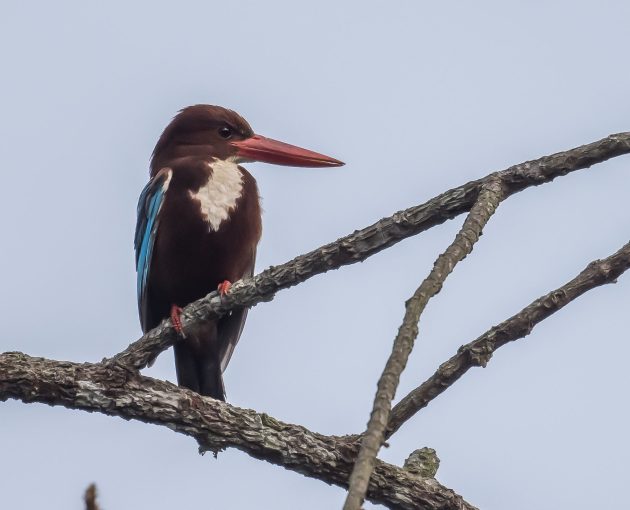
The call of this kingfisher apparently masked the presence of a small new frog species for a long time, as the frog’s call sounds very similar to the well-known one of the kingfisher (source). An interesting coincidence.
How do White-breasted Kingfishers pass their time? According to one paper, they spent an average of 54% of their time scanning, 23% feeding, 13% flying, 6% preening, and 4% resting – though I wonder how clear the distinction between resting and scanning is.
The Black-backed Dwarf Kingfisher is listed as Near Threatened on Wikipedia and eBird while Cornell is vacillating, stating within the same paragraph that the conservation status is Near Threatened and that the species is not globally threatened and listed as Least Concern. I sometimes think Cornell may not be as focused on birds as the other two sources.
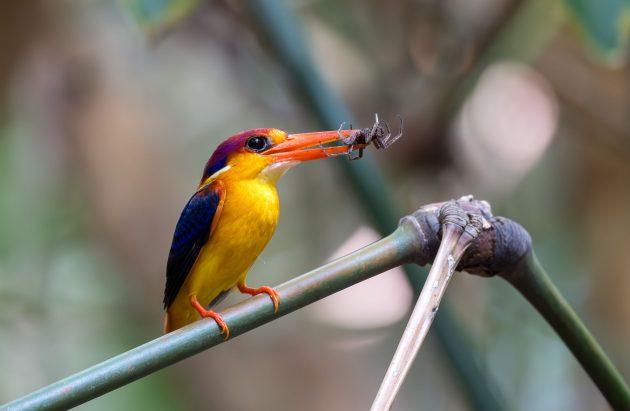
eBird admiringly calls it a “brilliantly colored, tiny forest kingfisher with a coral-red dagger bill”. It is indeed one of the smallest kingfishers in the world.
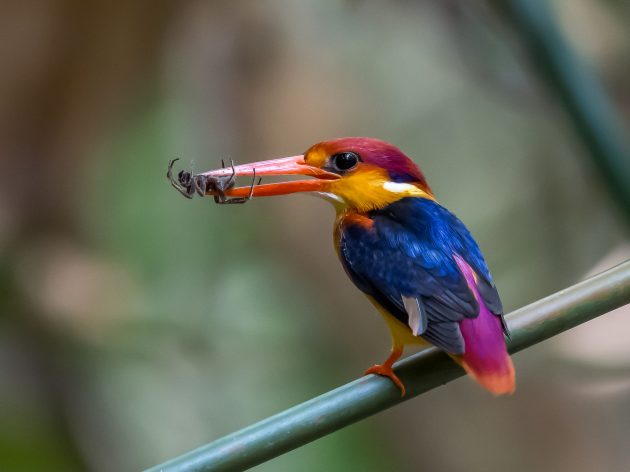
The scientific name Ceyx erithaca (meaning “red-breasted”) seems to indicate that the bird was named based only on black-and-white photos.
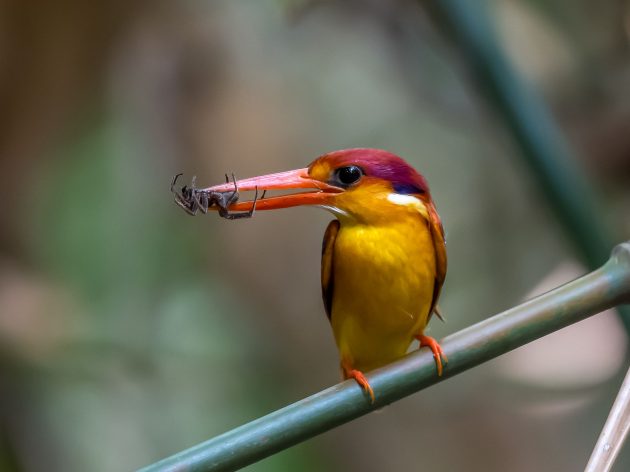
But the absolute star of the show – and for me, of the whole trip – was the Banded Kingfisher, specifically, the male.
Cornell justifiably calls it a “relatively small but spectacular kingfisher endowed with striking sexual dimorphism” – indeed there is a huge difference between the male …
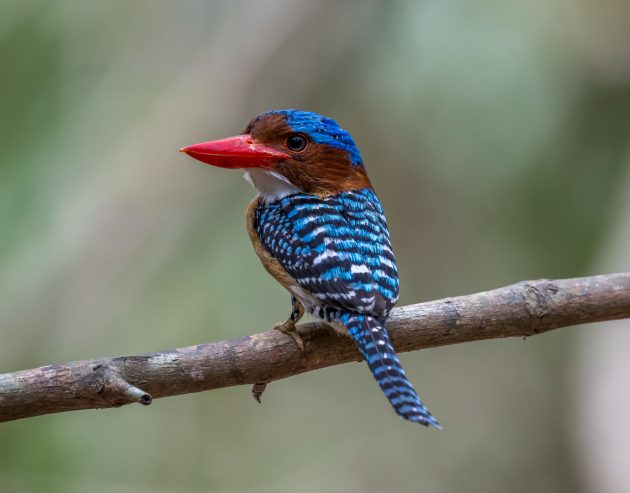
… and the female, even though both follow the same basic design ideas.
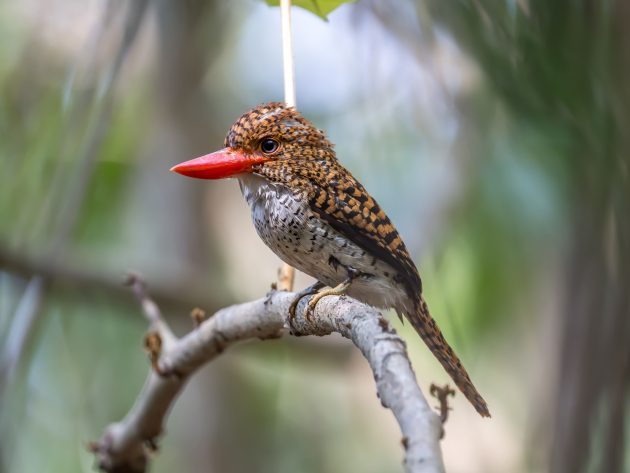
An interesting feature is the way the bird slowly raises and lowers its crest (video 1, video 2).

You thought I copied the same photo twice? No, these two photos are not the same. Look at the crest.
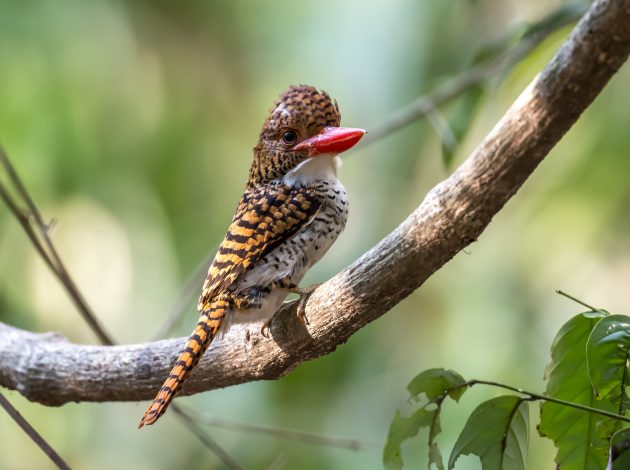
The scientific name Lacedo pulchella (pulchella means small and very pretty) fits well.
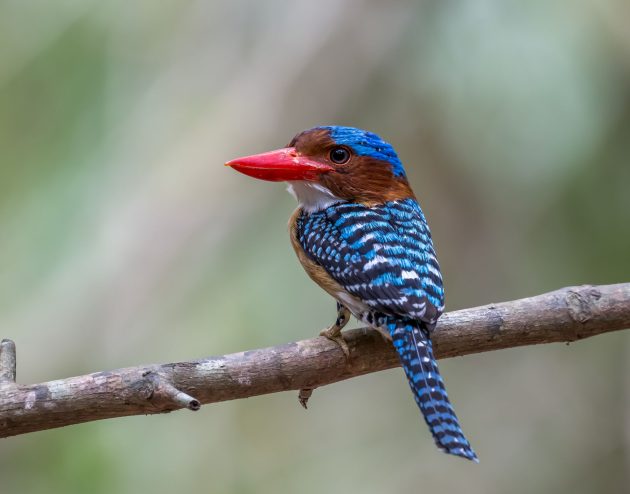
This photo is like one of these Japanese woodcuts – young lady under parasol
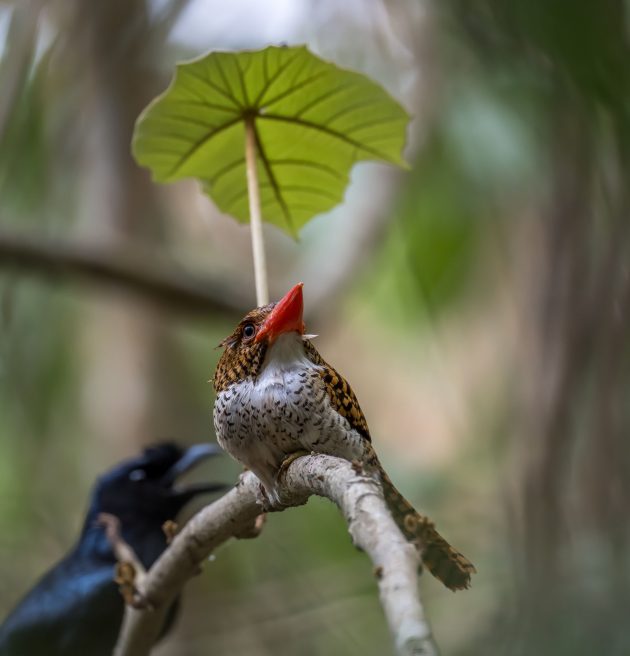
The genus name Lacedo also justifies some explanation – it is an anagram of Alcedo, the Latin word for kingfisher (source).

Final self-check: How did I do with regard to snarky comments? I guess I did not entirely do without them, with a researcher thinking that using Facebook as a source is a good idea, and Cornell getting some flack … still, not too bad. Maybe “Altersmilde” (getting mild-mannered with old age) is gradually setting in.
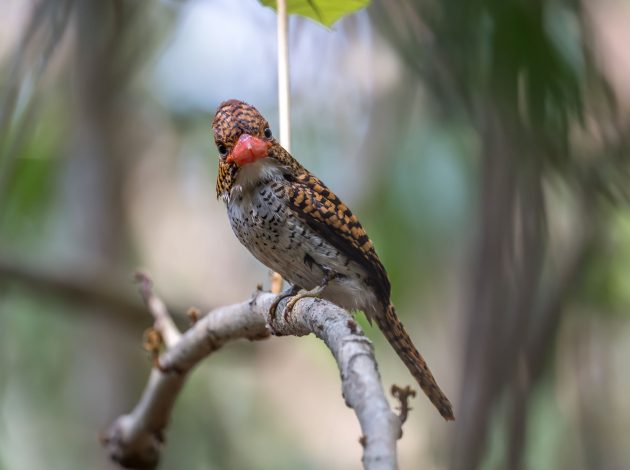
Though it is hard to end this post without stating that the birds of Springfield, Ohio all support Kamala Harris these days.
Source link
Facebook
Pinterest
Twitter
LinkedIn

